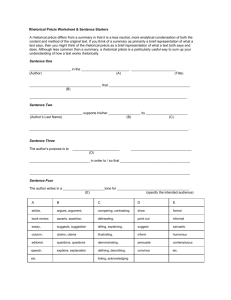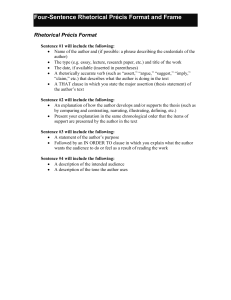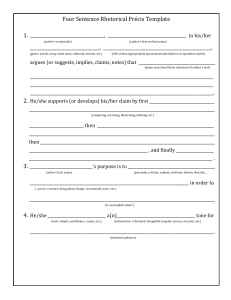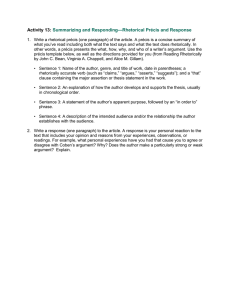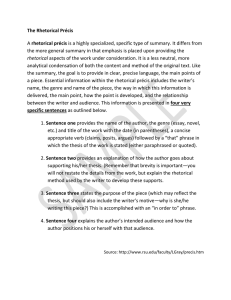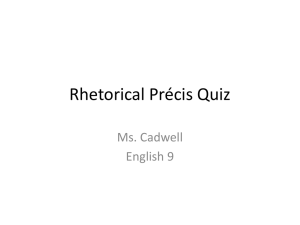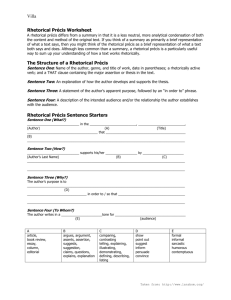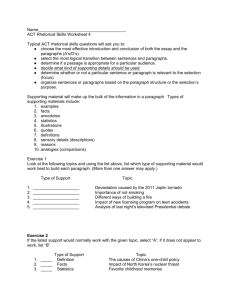Today's_Tasks
advertisement
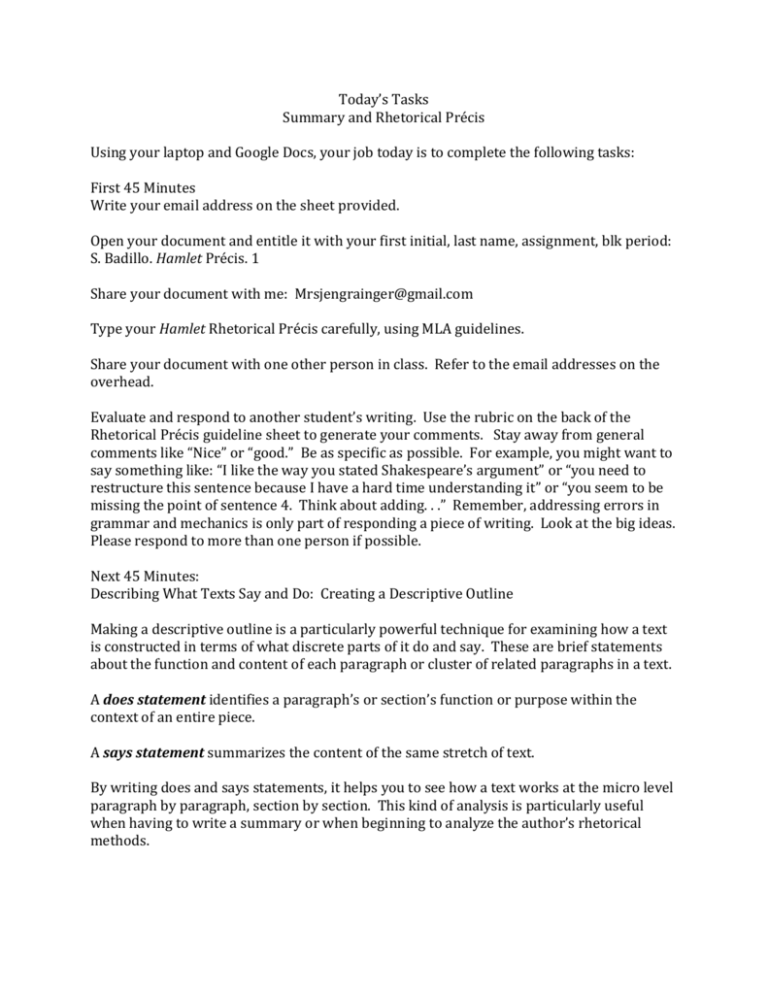
Today’s Tasks Summary and Rhetorical Précis Using your laptop and Google Docs, your job today is to complete the following tasks: First 45 Minutes Write your email address on the sheet provided. Open your document and entitle it with your first initial, last name, assignment, blk period: S. Badillo. Hamlet Précis. 1 Share your document with me: Mrsjengrainger@gmail.com Type your Hamlet Rhetorical Précis carefully, using MLA guidelines. Share your document with one other person in class. Refer to the email addresses on the overhead. Evaluate and respond to another student’s writing. Use the rubric on the back of the Rhetorical Précis guideline sheet to generate your comments. Stay away from general comments like “Nice” or “good.” Be as specific as possible. For example, you might want to say something like: “I like the way you stated Shakespeare’s argument” or “you need to restructure this sentence because I have a hard time understanding it” or “you seem to be missing the point of sentence 4. Think about adding. . .” Remember, addressing errors in grammar and mechanics is only part of responding a piece of writing. Look at the big ideas. Please respond to more than one person if possible. Next 45 Minutes: Describing What Texts Say and Do: Creating a Descriptive Outline Making a descriptive outline is a particularly powerful technique for examining how a text is constructed in terms of what discrete parts of it do and say. These are brief statements about the function and content of each paragraph or cluster of related paragraphs in a text. A does statement identifies a paragraph’s or section’s function or purpose within the context of an entire piece. A says statement summarizes the content of the same stretch of text. By writing does and says statements, it helps you to see how a text works at the micro level paragraph by paragraph, section by section. This kind of analysis is particularly useful when having to write a summary or when beginning to analyze the author’s rhetorical methods. In small groups on 2’s and 3’s, review Armstrong’s “It’s Not About My Bike.” Complete the “Does” vs. “Says” annotations on the paper provided, and be certain to number each paragraph/section you are focusing on. Homework: In order to demonstrate your solid understanding of what the writer has said, write a summary, a condensed version of a text’s main points written in your own words that convey the author’s main ideas but eliminates supporting details, of the excerpt “It’s Not About My Bike.” Use the six steps provided to generate a meaningful summary. Composing a Summary 1. Read the text first for its main points 2. Reread carefully and make a descriptive outline. 3. Write out the text’s thesis or main point. (Suppose you had to summarize the whole argument in one sentence). 4. Identify the text’s major divisions or chunks. Each division develops one of the stages needed to make the whole main point. Typically these stages or parts might function as background, review of the conversation summary of opposing views, or subpoints in support of the thesis, 5. Try summarizing each part in one or two sentences. 6. Now combine your summaries into a coherent condensed version of the text’s main ideas in your own words.
